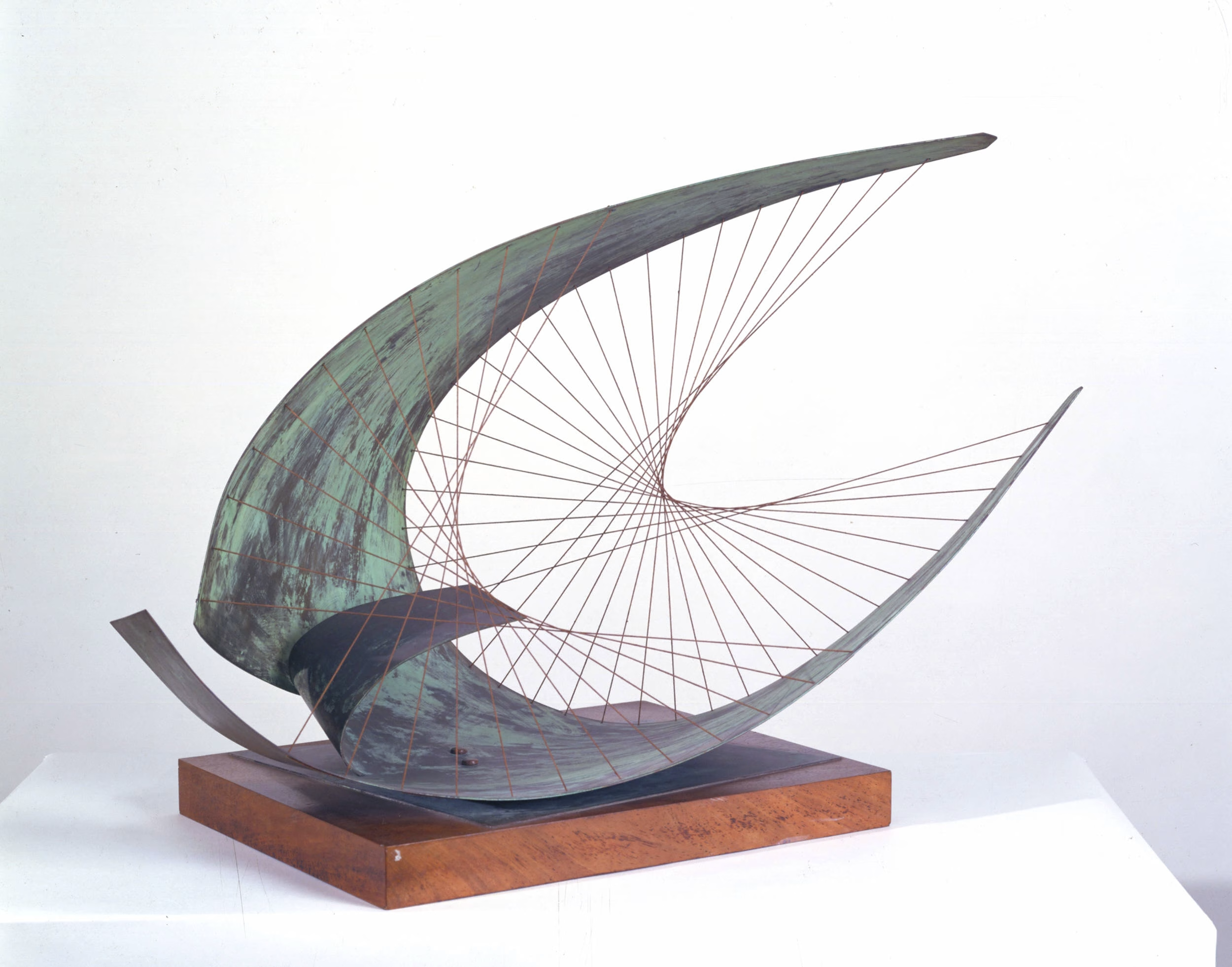A fundraising campaign has been initiated with the aim of raising nearly £3 million to prevent a remarkable sculpture by Barbara Hepworth from being sold to a private collector and removed from the UK.
Art Fund, a charity dedicated to preserving art for public collections and supporting museums, is working to secure the funds necessary to keep Hepworth’s work, Sculpture with Colour (Deep Blue and Red), in the country.
This significant piece, created during the tumultuous years of World War II while Hepworth resided in Cornwall, was auctioned by Christie’s last March, fetching £3.8 million. Fortunately, the UK government has placed an export ban on the sculpture, allowing until August for institutions to raise the funds to meet the price offered by the private buyer, who intends to take the artwork abroad. Art Fund has already contributed £750,000 but still needs an additional £2.9 million before the August 27 deadline.
Eleanor Clayton, the senior curator at the Hepworth Wakefield and a specialist in Hepworth’s work, emphasized the importance of keeping the sculpture in the UK for future generations to appreciate.
“Hepworth is undoubtedly one of the most significant British sculptors, and this piece exemplifies her pioneering wooden, string-carved sculptures,” Clayton stated.
She expressed optimism about the potential success of the campaign, noting that if achieved, the sculpture would be permanently displayed for the public in Wakefield or lent to major exhibitions across the country.
Sculpture with Colour (Deep Blue and Red) was crafted in 1943 after Hepworth and her family moved to St Ives in Cornwall to escape the bombings in London. At the time, Hepworth required a special permit to use wood for her sculptures, and she ingeniously employed string in this piece—one of the first instances of her working with this technique.
Clayton elaborated on the difficulties Hepworth faced during its creation, particularly due to the war and her responsibilities at home. “She had to juggle childcare and household chores,” Clayton explained. “She documented in a letter how she would work for half an hour before stepping away to cook, then return to carve for another twenty minutes.”
The sculpture has not been seen publicly in the UK since it was part of a retrospective of Hepworth’s work at Tate Britain in 2015—one of the few opportunities for audiences to experience it firsthand. Hepworth, who lived much of her life in the shadow of her contemporaneous counterpart, Henry Moore, made it clear that engaging with her sculptural works in person was essential for a true understanding of them.
As the campaign unfolds, supporters of art preservation hope to secure the future of this significant piece within the UK.













